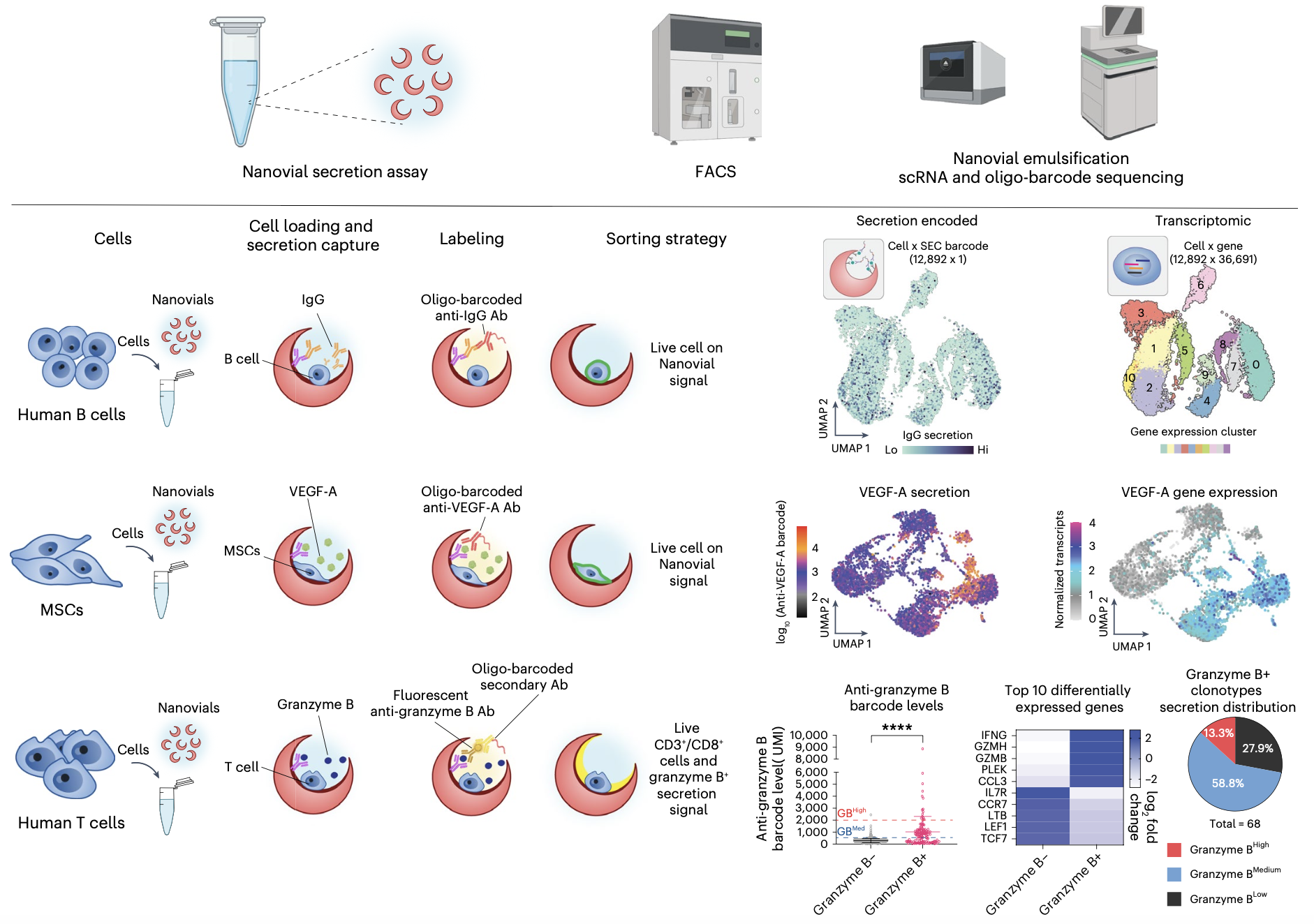Linking Single-Cell Transcriptomes with Secretion Using SEC-seq
Justin Langerman, Sevana Baghdasarian, Rene Yu-Hong Cheng, Richard G. James, Kathrin Plath & Dino Di Carlo
Nature Protocols, February 2025
Abstract
Cells secrete numerous proteins and other biomolecules into their surroundings to achieve critical functions—from communicating with other cells to blocking the activity of pathogens. Secretion of cytokines, growth factors, extracellular vesicles and even recombinant biologic drugs defines the therapeutic potency of many cell therapies. However, gene expression states that drive specific secretory phenotypes are largely unknown. We provide a protocol that enables the secretion amount of a target protein encoded (SEC) by oligonucleotide barcodes to be linked with transcriptional sequencing (seq) for thousands of single cells. SEC-seq leverages microscale hydrogel particles called Nanovials to isolate cells and capture their secretions in close proximity, oligonucleotide-labeled antibodies to tag secretions on Nanovials and flow cytometry and single-cell RNA-sequencing (scRNA-seq) platforms for readout. Cells on Nanovials can be sorted on the basis of viability, secretion amount or other surface markers without fixation or permeabilization, and cell- and secretion-containing Nanovials are directly introduced into microfluidic droplets-in-oil emulsions for single-cell barcoding of cell transcriptomes and secretions. We have used SEC-seq to link T cell receptor sequences to the relative amount of associated cytokine secretions, surface marker gene expression with a highly secreting and potential regenerative population of mesenchymal stromal cells and the transcriptome with high immunoglobulin secretion from plasma cells. Nanovial modification and cell loading takes <4 h, and once the desired incubation time is over, staining, cell sorting and emulsion generation for scRNA-seq can also be completed in <4 h. Compared to related techniques that link secretions to a cell’s surface, SEC-seq provides a general solution across any secretion target because of the ease with which biotinylated Nanovials can be modified. By linking gene expression and secretory strength, SEC-seq can expand our understanding of cell secretion, how it is regulated and how it can be engineered to make better therapies.
Topics
Technology

